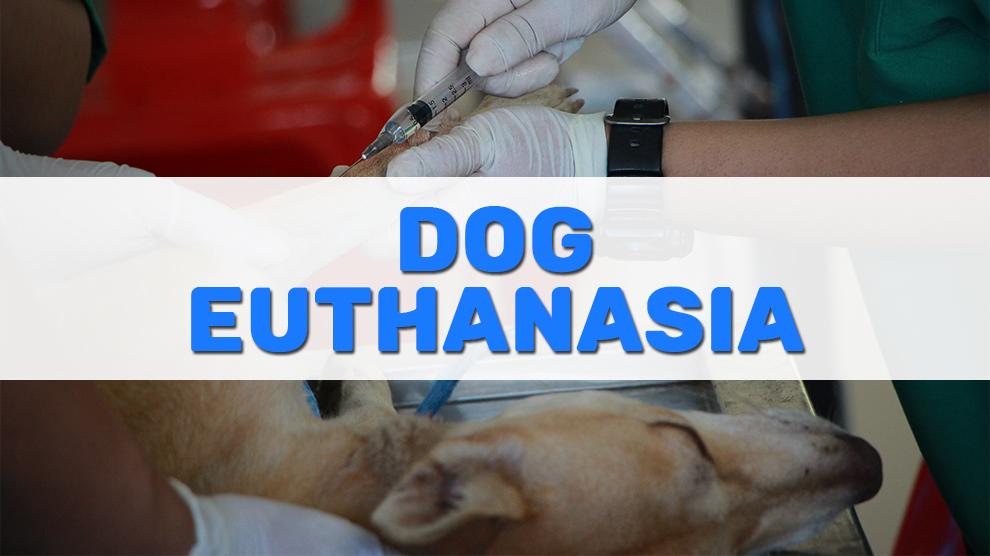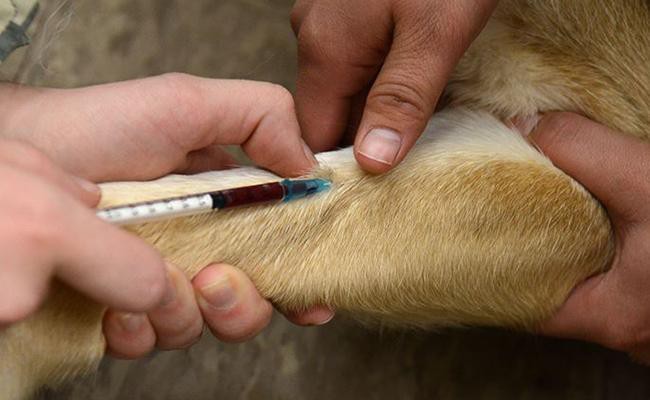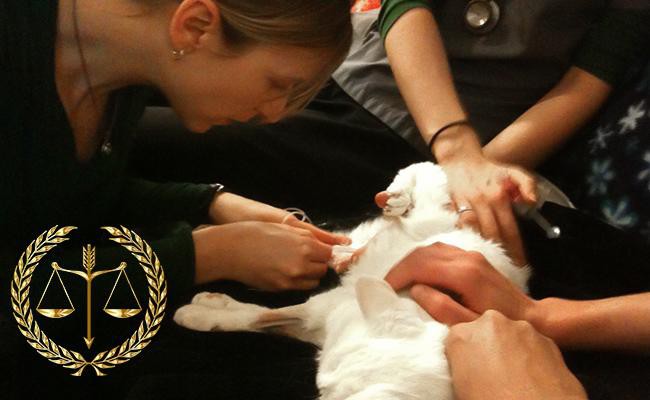Dog Pregnancy Calculator And Timeline
The traumatic experience of watching your beloved pets linger in pain is even excruciating than the disease itself. Simply sitting back and “letting nature take its course” can cause your pet unnecessary pain.
The decision to say goodbye to a cherished pet is never easy, but alleviating a pet’s suffering by opting for euthanasia (mercy killing) can be the kindest last decision.
While it will most likely make them gloomy for days to come, the pet owners are “Playing God” and consider to ‘put their pets to sleep’ as a kind means of lessening their pain or distressed condition of life in the face of a terminal disease or mortal injury.
For those who have already experienced euthanizing, there is usually a poignant story to share about a treasured dog’s passing. The origin of the word “euthanasia,” is from the Greek word ‘euthanatos’, which means ‘good death’.
The “passionate part” in you says the two of you will be together forever and it’s never easy to say goodbye to our canine counterparts. Even in an age of medical innovations, and a multitude of opinions and options, it’s smart to start early and think about the future decision you’ll face.
Reasons To Put Your Dog Down
Though it may sound sinister to say so, euthanasia is a science and an art. And although we would all like to provide the Greeks “beautiful death” to the pets that are in agony, it is not always as easy to pull off as you would think.
Let’s start with the basics – You may be best buddies, but the difference in species means that, you will outlive your four-legged friend (provided you’re healthy).
Giant breeds like Great Danes and wolfhounds often live only 7-8 years, and even the longest-lived breeds like Yorkshire terriers and Chihuahuas only average 17-20 years.
So how to decide – A general rule of thumb is when “the dreadful days surpass the good days”.
Senior pets, during their last days, may experience pain, confusion, and signs of dementia. These age-related difficulties will lead to the mental distress of both the pet and the pet owner.
Some dogs may undergo organ failure, lack of appetite, chronic nausea and vomiting.
Certainly, diseases and health complications can change the age game, so it’s significant that you don’t wait until the average lifespan. Quality of life may be impacted by an accident, disease or chronic pain. While we shudder to think of it, we might also face any those issues.
- Accidents – One disastrous moment might yield for this even harder decision. Or, some other calamity has befallen your pet. Things went downhill fast and your pet’s earlier life cannot be restored. You really have no choice.
- Disease – Determine the severity or terminal nature of the disease. For instance, Rabies is incurable and requires euthanization. While Canine distempers can be treated but they often leave lifelong neurological damage.
Older and larger dogs may suffer from degenerative joint diseases like hip dysplasia, impacting everyday activities and movements. - Behavior – The decision about whether or not to euthanize a dog for aggression issues or any other kind of serious, unpredictable behavior problem is very personal, and it’s the owner’s choice (if the training and behavior modification or medications to treat the behavior issues didn’t work)
- Cancer – Your doggo never know she has the big C, it is painful for us more than it is painful to her. The hardest decision you have to make is determining when the quality of your dog’s life is compromised to the point where it’s not worth going on.
Dog Euthanasia Cost
- If performed in a vet clinic costs between $50 and $100.
- At-home – when the vet comes to the home to perform the euthanasia, costs anywhere between $200 and $400.
- Euthanasia aftercare – The transportation of the pet’s remains to a facility and cremation costs up to $200 ( for e.g., Maryland SPCA charge the pe cremation fees by weight — for dogs less than 30 pounds they charge $80 and for dogs above 101 pounds $165).
- Normally, the pet owners may ask for a paw print and some additional services like ashes in a pretty box or in an urn. This will cost more and it depends mainly on the service provider.
- Burial in pet cemetery costs around $500. Most cemeteries also require that a pet is buried in a casket, which can cost an additional $200 to $500.
Dog Euthanasia Drugs
People often wonder what to expect during euthanasia. There are many different protocols, so the experience may be different with different vets but usually, they try to be as humane as possible.
- A dose of Sedatives – The first injection is a mild sedative or tranquillizer. The effect of barbiturates can be painful to your dog. Of course, we don’t want to let go our beloved pet in a much more painful way; so some sedatives to keep them relax.
Consult your veterinarian always for the correct sedatives. The drugs commonly used are- Telazol, Ketamine, Propofol etc (are usually delivered IV for euthanasia)
- Medetomidine, Acepromazine, Xylazine( IM injection)
- Barbiturates – Many different preparations of barbiturates are used to overdose animals quickly. Pentobarbital Sodium is the most efficient anaesthetic drug approved by the Humane Society of America to euthanize pets.
You can choose between oral barbiturates or injections. IV injection is preferred due to the rapid onset of cardiac arrest (within fifteen to sixty seconds in most cases).
Euthanasia At Home
Regardless of where it is performed, Euthanasia should be a quick, peaceful and virtually pain-free procedure to help your best friend “cross the rainbow bridge”.
It would be best to consult a qualified and practicing vet for euthanasia by your side even if you’re doing this process at home. This would make sure you are euthanizing your dog in the right way.
Will Euthanasia hurts? What normally happens??
- In general, two shots will be given to the pet.
- The first one is to sedate the dog which gently makes the dog go unconsciousness. It will experience only the prick of the injection and the dog will fall into a very deep sleep.
- Dogs with catheters and receiving drugs (for ex., propofol) make them fall asleep within one minute. Dogs without catheters receive an under-the-skin injection which takes effect in 5-10 minutes.
- The second injection will be administered by the vet when the pet owner or the family is ready. Generally, a drug called pentobarbital is given. This stops the functions of the lungs and heart.
- The vets may administer this injection intravenously or into the abdomen. If given through veins, it will bring the death in seconds; If dispensed through the stomach, it will be a little more gentle and take may 10 to 15 minutes to get over. But in either case, the pet will not be aware of what happens to him and the death will be peaceful.
Things to be aware of during euthanization:
- The eyes remain open in most cases.
- Maybe they give a last panting breath called a final breath, which is more of involuntary muscle contractions.
- There maybe vocalization and muscle twitching.
- The urinary bladder and may be bowel contents will be released.
- In most circumstances, you will notice nothing except a soft release of tension, as in ‘going to sleep’.
- Due to each pet’s individual health situation, things will be different from animal to animal.
Animal Euthanasia Pros And Cons
These facts about euthanasia might seem simple and uncontroversial, but the euthanasia debate runs strong and deep on every side.
The pro-euthanasia side – The strongest and most poignant pro-euthanasia point is that the pet parents decide to put the pets to sleep in order to spare it from pain and suffering.
When your dog is suffering and she has lost all joy in being ‘a dog’, all one wants to do is help them, get out of their misery. Why let someone suffer due to your emotional attachment and for selfish reasons? Why not free them from their wretchedness?
The cons side – It is wrong to take your pet’s life prematurely and it should be condemned at all costs. The cons side says that millions of dogs are dying each year because pet owners don’t know how or don’t want to deal with them.
Many pets are euthanized at shelters all over the country every day even when they are young and healthy.
The non-confrontational neutralist side – Let’s keep pet euthanasia legal, but let’s make it harder to euthanize a pet. Gain a comprehensive knowledge about euthanasia and the statistics as well. Eventually, you should be clear about why that decision was taken―either to go through it or ditch it.
Is It Legal To Euthanize Animals?
Ask a licensed vet in your immediate location; different countries have different laws, there are no universal laws. The method of euthanasia is fairly standard across all the states in America.
You’re allowed to euthanize your pet through a licensed vet. In some states, laws even permit a non-veterinarian putting a pet to sleep; however, these euthanasia techs are also required to undergo training.
Several states allow law enforcement officers, veterinarians, and animal control agents to shoot or put down a dangerous, sick or injured dog that is beyond saving (For the purpose of “emergency” euthanasia).
Final thoughts – You know time’s up… but then you really don’t. Most of us are unsure whether to go for euthanasia or not. That’s, in fact, an understatement. But, euthanizing your pet is
Your choice, your decision
Remember, the vets view the situation more normally and will not have any emotional tie-up. Their concern is about the ‘no-harm’ point of the case.
Your feelings count but ask for the second opinion – and other second-opinion vets might not know you and your pet well, but still, getting one more brain is better.
Philosopher Martin Heidegger has stated that for humans much of life’s significance is derived from balancing past experiences with future aspirations, such as hoping to see Hawaii again or wishing one’s children graduate.
On the other hand, Animals lack the tools to permit them to analyze or anticipate the future or create an internal narrative of the past. Instead, they live immensely in the present.
So if you are reluctant to euthanize, make sure your pet experiences pleasant “now’s” or not. If the dog has lost the ability to have positive “now’s” or experiences, it’s better to let her go.
Sometimes it’s better to be a day too early than a second too late. It’s not in your hands, all gone too wrong. You’re all out of tears and if you’re ready, and you feel euthanasia is a relief. Then go for it























